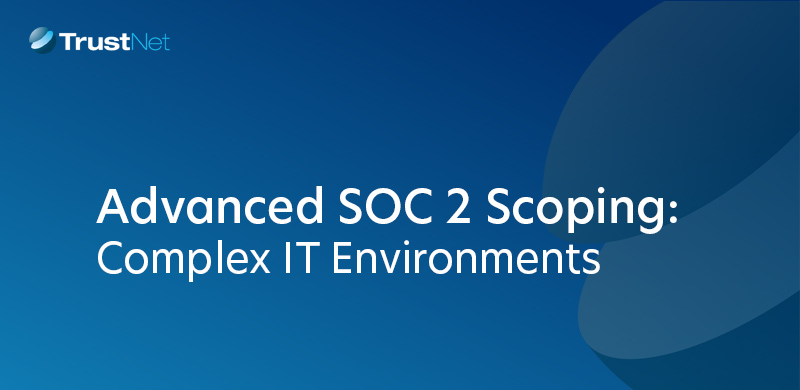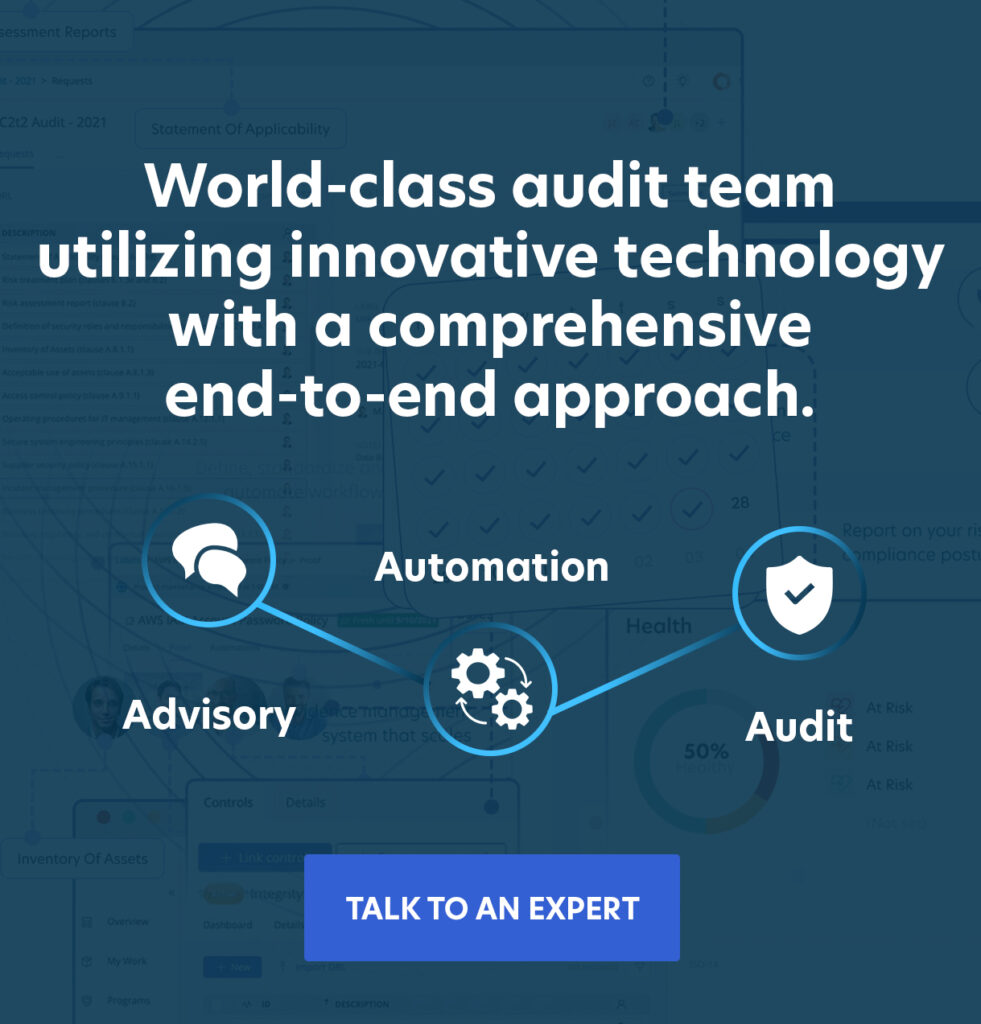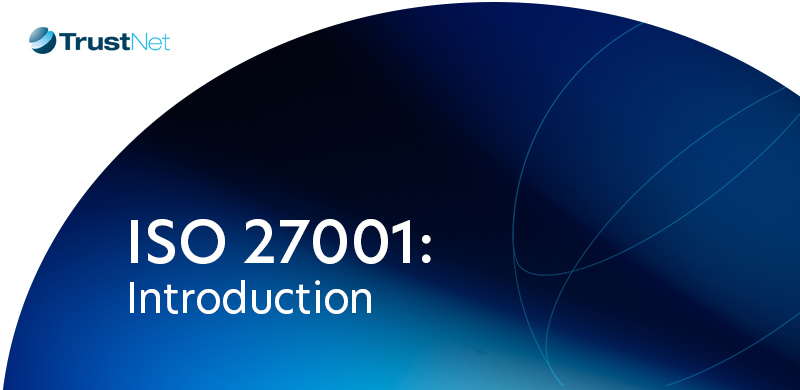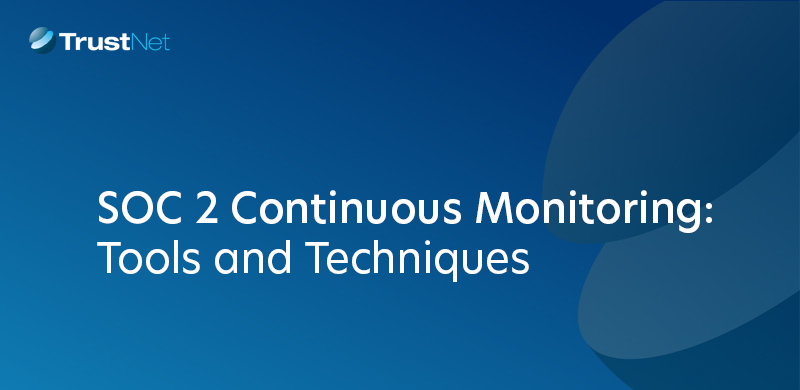Advanced SOC 2 Scoping: Complex IT Environments

TL;DR
Most teams over- or under-scope their SOC 2 audits, wasting time, missing risks, or both. This guide gives you a proven, repeatable framework to define scope by risk, adapt to change, and stay audit-ready with automation.
Scoping for SOC 2 in complex IT environments isn’t just important; it’s essential.
When you’re working across AWS, Azure, on-prem systems, and legacy databases, you’re already navigating a sophisticated landscape. Add in SaaS platforms, unmanaged APIs, and globally distributed teams, and defining your SOC 2 scope becomes a strategic challenge that requires careful attention.
Get it wrong, and here’s what you’re dealing with:
-
- Engineers wasting hours collecting evidence for systems that never should’ve been audited
- Missed attack surfaces hiding in shadow IT or third-party services
- Auditors are flagging exceptions because the Trust Services Criteria (TSC) you’ve scoped don’t accurately reflect your current IT environment.
Most scoping frameworks weren’t built for this reality. They break when infrastructure evolves weekly, or when shared responsibilities with vendors blur the lines of control.
This guide changes that.
You’ll get a proven roadmap to:
-
- Build risk-based scopes that reflect what your environment really does
- Cut through the noise and zero in on systems that matter
- Use automation and tooling to keep your scope agile and audit-ready
If you’re running hybrid, multi-cloud, or legacy-heavy infrastructure, this isn’t theory. It’s how you keep your audit and your trust posture from collapsing under its own weight.
What Defines a “Complex” IT Environment?
A complex IT environment is fragmented, fast-changing, and full of interdependencies. These aren’t edge cases anymore; they’re the norm for companies scaling across platforms, geographies, and architectures. Scoping for SOC 2 in these environments demands precision, because the moving parts never stop.
Here’s what complexity looks like in practice:
Multi-Cloud and Hybrid Deployments
Your infrastructure isn’t limited to just AWS anymore.You might be using Azure for analytics, GCP for machine learning, and still running critical workloads on-prem. Each of these platforms has its own security model, logging format, and identity system.
That diversity makes it harder to maintain consistent visibility and control; two things that are essential when mapping your environment to SOC 2’s Trust Services Criteria (TSCs).
Legacy Meets Modern
Older monoliths still power core services, but they’re now interconnected into microservices, containerized apps, and event-driven pipelines. Legacy systems often lack audit logs or robust access controls, creating gaps that SOC 2 auditors will immediately identify.
Distributed Teams and External Vendors
Remote teams span time zones. Engineers spin up cloud resources from anywhere. Meanwhile, third-party SaaS, IaaS, and MSPs handle critical infrastructure. This web of shared responsibility makes it harder to enforce consistent policies or to prove you’ve enforced them at all.
Data Flowing Across Borders
Your customer data might travel between the EU, the US, and APAC—sometimes within a single transaction.
This cross-border movement introduces jurisdictional risks and increases your obligations around confidentiality and privacy; two core domains under SOC 2’s Trust Services Criteria (TSC).
Why This Matters for SOC 2
In complex environments, you face:
-
- A wider attack surface due to decentralized control
- Fragmented logging and monitoring, often across tools and teams
- Ambiguous ownership, especially when vendors are involved
To scope effectively, you need to identify every component that impacts security, availability, processing integrity, confidentiality, and privacy, and clearly distinguish what’s in scope from what’s not.
Not Sure What Your SOC 2 Scope Looks Like?
TrustNet’s AICPA-accredited auditors help teams map SOC 2 scope across hybrid, cloud, and legacy systems
Challenges in Advanced SOC 2 Scoping
Complex environments amplify every scoping decision; getting it wrong leads to bloated audits, missed risks, or both.
Here are the key challenges that derail SOC 2 scoping:
1. Over-Scoping Wastes Resources
Teams often include systems that don’t process customer data or impact trust criteria. Auditing HR apps, internal tooling, or QA environments adds unnecessary documentation, testing, and cost. It also diverts attention from the systems that truly matter, those that directly affect security, availability, confidentiality, privacy, or processing integrity.
2. Under-Scoping Creates Blind Spots
Shadow IT, unmonitored APIs, and untracked SaaS tools often fall outside of initial scoping exercises. But even if they’re unmanaged, these systems still introduce risk and auditors don’t take long to notice them. If a system impacts any of the Trust Services Criteria, it belongs in scope.
3. Dynamic Environments Shift Mid-Audit
You might migrate to a new cloud service provider, onboard a new vendor, or merge teams during your audit period. If your scope doesn’t evolve with those changes, you’ll either miss critical controls or waste time reworking the scope with your auditor.
4. Third-Party Dependencies Obscure Accountability
Subservice organizations, like cloud hosts or payment processors, don’t always meet the same security or availability standards you do. If you don’t validate their SOC reports or classify them correctly (inclusive vs. carve-out), you risk inheriting their vulnerabilities without having the controls — or the audit coverage — to address them.
5. Legacy Systems Resist Control Mapping
Older technology often lacks access logs, encryption, or integration with modern SIEM tools. Mapping these systems to the Trust Services Criteria requires compensating controls or documented limitations, both of which raise scrutiny during an audit.
To overcome these challenges, scoping must be iterative, risk-driven, and tied directly to how systems influence customer trust. Static spreadsheets and guesswork won’t cut it.
Step-by-Step Scoping Framework for Complex Environments
A sound SOC 2 scope doesn’t start with systems; it starts with risk. In hybrid, cloud-native, or legacy-integrated environments, you need a repeatable, defensible approach that reflects both your architectural realities and business priorities.
Here’s how to build it:

1. Map Critical Services & Data Flows
- List systems that handle customer data
- Identify APIs, storage, and pipelines
- Use visual mapping tools
2. Align TSCs with Actual Risk
- Choose TSCs based on system function
- Include Security (required), and consider Availability, Confidentiality, Privacy, and Processing Integrity.
- Exclude non-relevant TSCs
3. Classify Vendors & Subservices
- Tag vendors as Inclusive or Carve-Out
- Validate SOC 2 reports or assess risks
4. Segment Networks & Environments
- Separate production, development, and staging environments
- Apply segmentation using firewalls, VLANs, and cloud-native controls
5. Address Legacy System Gaps
- Implement compensating controls
- Document risks and enhance visibility with monitoring tools
Automation & Tooling for Dynamic Scoping
To keep your SOC 2 scope accurate, you need tools that adapt in real time, surface blind spots, and reduce manual effort. That’s where GhostWatch by TrustNet comes in.
GhostWatch: Centralized Compliance Automation
Built for hybrid, cloud-native, and legacy environments, GhostWatch provides:
-
- Real-Time Asset Discovery: Continuously detects systems and services across AWS, Azure, GCP, and on-prem.
- Dynamic TSC Mapping: Automatically aligns assets and controls to the correct Trust Services Criteria based on risk and function.
- Integrated Log Management: Collects and correlates logs across environments to validate control performance.
- Multi-Cloud Visibility: Identifies misconfigurations, monitors infrastructure drift, and tracks changes across your stack.
- Dedicated Compliance Management: A project manager oversees everything, from gap assessments to audit facilitation and policy implementation.
With GhostWatch as your foundation, your SOC 2 scope stays accurate, evidence stays centralized, and your audit process stays under control, no matter how fast you scale.
Avoiding Common Pitfalls
Even strong control environments break down when scoping misfires. These are the most common mistakes that derail audits:
- Scoping Too Much: Don’t include systems like HR platforms, sandbox environments, or internal dev tools unless they store, process, or transmit customer data. They increase audit work with zero compliance impact.
- Scoping Too Little: Missed APIs, CI/CD pipelines, or SaaS tools create gaps that auditors flag fast. If they touch regulated data or critical workflows, they belong in scope.
- Assuming the Cloud Handles It: AWS, Azure, and GCP operate on shared responsibility. You still own data encryption, logging, monitoring, and access controls for your workloads.
- Freezing Scope Mid-Change: Product launches, cloud migrations, or vendor onboarding can instantly shift scope. If you don’t reassess, your scope drifts from reality and auditors will flag it.
Review your scope every time your architecture shifts. Map it back to risk, not convenience. That’s how you stay clean through audit, and tight in production.
What to Do Next: Turn SOC 2 Scoping into a Repeatable, Cloud-Ready Discipline
If you’re running complex infrastructure, don’t wait for the audit to find your gaps. Take control of your SOC 2 scope now.
-
- Map systems that impact customer trust.
- Reassess your scope every time your architecture shifts.
- Eliminate noise.
- Close blind spots fast.
- Use a risk-based approach to focus your effort where it counts.
- Let automation handle the rest.
Book your SOC 2 scoping consultation with our AICPA-accredited auditors or request a GhostWatch demo
Subscribe to the TrustNet Newsletter
actionable cybersecurity strategies, and TrustNet’s cutting-edge solutions.



